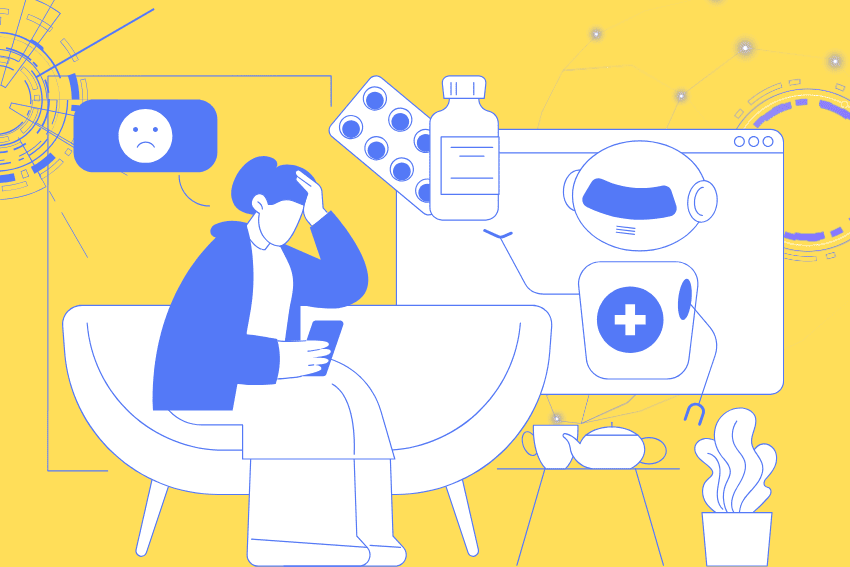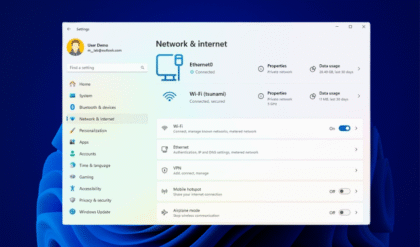Introduction to AI in Telemedicine
Telemedicine diagnostics have transformed healthcare by enabling remote consultations and assessments, and artificial intelligence (AI) is taking this revolution to the next level. By integrating advanced algorithms, machine learning, and data analytics, AI enhances the accuracy, efficiency, and accessibility of telemedicine, making it a powerful tool for healthcare providers and patients alike. This article explores how AI is reshaping telemedicine diagnostics, its benefits, real-world applications, and answers to common questions about this evolving technology.

The Role of AI in Telemedicine Diagnostics
AI-powered telemedicine diagnostics leverage cutting-edge technologies to analyze medical data, assist healthcare providers, and deliver personalized care remotely. From image analysis to predictive modeling, AI augments the capabilities of telemedicine platforms, enabling faster and more accurate diagnoses without the need for in-person visits.
Enhanced Diagnostic Accuracy
AI algorithms, particularly those using machine learning and deep learning, excel at identifying patterns in complex datasets. In telemedicine, these algorithms analyze medical images, patient records, and symptoms to provide precise diagnoses. For instance:
- Medical Imaging: AI tools can analyze X-rays, MRIs, and CT scans to detect abnormalities like tumors, fractures, or infections with accuracy comparable to or exceeding human specialists.
- Symptom Analysis: AI-powered chatbots and virtual assistants collect patient symptoms during teleconsultations and cross-reference them with vast medical databases to suggest potential conditions, reducing human error.
By improving diagnostic precision, AI ensures patients receive timely and accurate treatment plans, even from a distance.
Faster Processing and Workflow Efficiency
Telemedicine diagnostics often involve large volumes of data, from patient histories to real-time vitals. AI streamlines these processes by:
- Automating Data Analysis: AI can quickly process electronic health records (EHRs), lab results, and wearable device data, presenting actionable insights to doctors in seconds.
- Triage Support: AI systems prioritize urgent cases by analyzing symptoms and vital signs, ensuring critical patients receive immediate attention during teleconsultations.
- Reducing Administrative Burden: AI automates tasks like transcribing consultations or summarizing patient notes, allowing doctors to focus on diagnostics rather than paperwork.
This efficiency saves time for both healthcare providers and patients, making telemedicine diagnostics more scalable and responsive.
Personalized and Predictive Care
AI’s ability to analyze vast datasets enables it to deliver personalized diagnostic insights. Machine learning models can:
- Predict Health Risks: By analyzing patient history and lifestyle data, AI can identify risks for conditions like diabetes or heart disease, enabling preventive measures.
- Tailor Treatment Plans: AI considers individual patient profiles—genetics, medical history, and current symptoms—to recommend customized treatment options during teleconsultations.
- Monitor Chronic Conditions: Wearable devices integrated with AI track real-time data (e.g., heart rate, glucose levels) and alert doctors to anomalies, supporting ongoing telemedicine diagnostics for chronic disease management.
This personalized approach enhances patient outcomes and fosters trust in remote care.
Expanding Access to Specialized Care
AI bridges gaps in healthcare access by enabling telemedicine diagnostics in underserved areas. For example:
- Remote Specialist Consultations: AI tools assist general practitioners in rural settings by providing specialist-level diagnostic support, such as dermatology or cardiology assessments.
- Language and Cultural Barriers: AI-powered translation tools facilitate communication between doctors and patients who speak different languages, ensuring accurate symptom reporting.
- Low-Resource Settings: AI diagnostic tools can function with minimal infrastructure, relying on cloud-based platforms to deliver telemedicine diagnostics to remote regions.
This democratization of healthcare ensures more people benefit from high-quality diagnostics, regardless of location.
Real-World Applications of AI in Telemedicine Diagnostics
AI is already making waves in telemedicine diagnostics across various medical fields:
- Dermatology: AI platforms like those used by dermatology apps analyze skin images uploaded by patients to detect conditions like melanoma or eczema with high accuracy.
- Radiology: Tools like Aidoc assist radiologists in telemedicine by flagging abnormalities in imaging studies, reducing diagnostic turnaround time.
- Cardiology: AI algorithms analyze ECG data from wearable devices to detect arrhythmias or other heart conditions during remote consultations.
- Mental Health: AI-driven chatbots assess mental health symptoms through conversational analysis, guiding patients to appropriate teletherapy resources.
These applications highlight AI’s transformative impact on telemedicine diagnostics, making remote care more reliable and effective.
Benefits of AI in Telemedicine Diagnostics
The integration of AI into telemedicine diagnostics offers numerous advantages:
- Improved Patient Outcomes: Accurate and timely diagnoses lead to better treatment and recovery rates.
- Cost Savings: By reducing the need for in-person visits and minimizing diagnostic errors, AI lowers healthcare costs for patients and providers.
- Scalability: AI enables telemedicine platforms to handle more patients without compromising quality, addressing physician shortages.
- Patient Empowerment: AI tools, like symptom checkers and health monitoring apps, give patients greater control over their health.
Challenges and Considerations
While AI enhances telemedicine diagnostics, it’s not without challenges:
- Data Privacy: Protecting sensitive patient data is critical, requiring robust encryption and compliance with regulations like HIPAA.
- Algorithm Bias: AI models must be trained on diverse datasets to avoid biased diagnoses that could disproportionately affect certain populations.
- Integration Barriers: Incorporating AI into existing telemedicine platforms can be complex, requiring training for healthcare providers.
Addressing these challenges is essential to fully realize AI’s potential in telemedicine diagnostics.
Conclusion
AI is revolutionizing telemedicine diagnostics, making healthcare more accurate, efficient, and accessible. By enhancing diagnostic precision, streamlining workflows, and personalizing care, AI empowers healthcare providers to deliver high-quality remote consultations. As technology advances, addressing challenges like data privacy and algorithm bias will be key to unlocking AI’s full potential in telemedicine. With these innovations, patients worldwide can access better care, no matter where they are.
FAQs About AI in Telemedicine Diagnostics
How accurate are AI-powered telemedicine diagnostics?
AI diagnostics, particularly in imaging and symptom analysis, often match or exceed human accuracy, with studies showing up to 90%+ accuracy in detecting conditions like cancer or heart disease. However, human oversight remains essential.
Is AI in telemedicine secure for patient data?
Yes, when designed with robust encryption and compliance with regulations like HIPAA, AI systems protect patient data. Always choose reputable telemedicine platforms with strong privacy policies.
Can AI replace doctors in telemedicine diagnostics?
No, AI supports doctors by enhancing diagnostic accuracy and efficiency but cannot replace human judgment, empathy, or complex decision-making.
How does AI make telemedicine more accessible?
AI enables diagnostics in low-resource areas, supports language translation, and provides specialist-level insights to general practitioners, expanding access to quality care.
What are some examples of AI tools in telemedicine?
Examples include Aidoc for radiology, dermatology AI apps like SkinVision, and wearable-integrated platforms for chronic disease monitoring.





